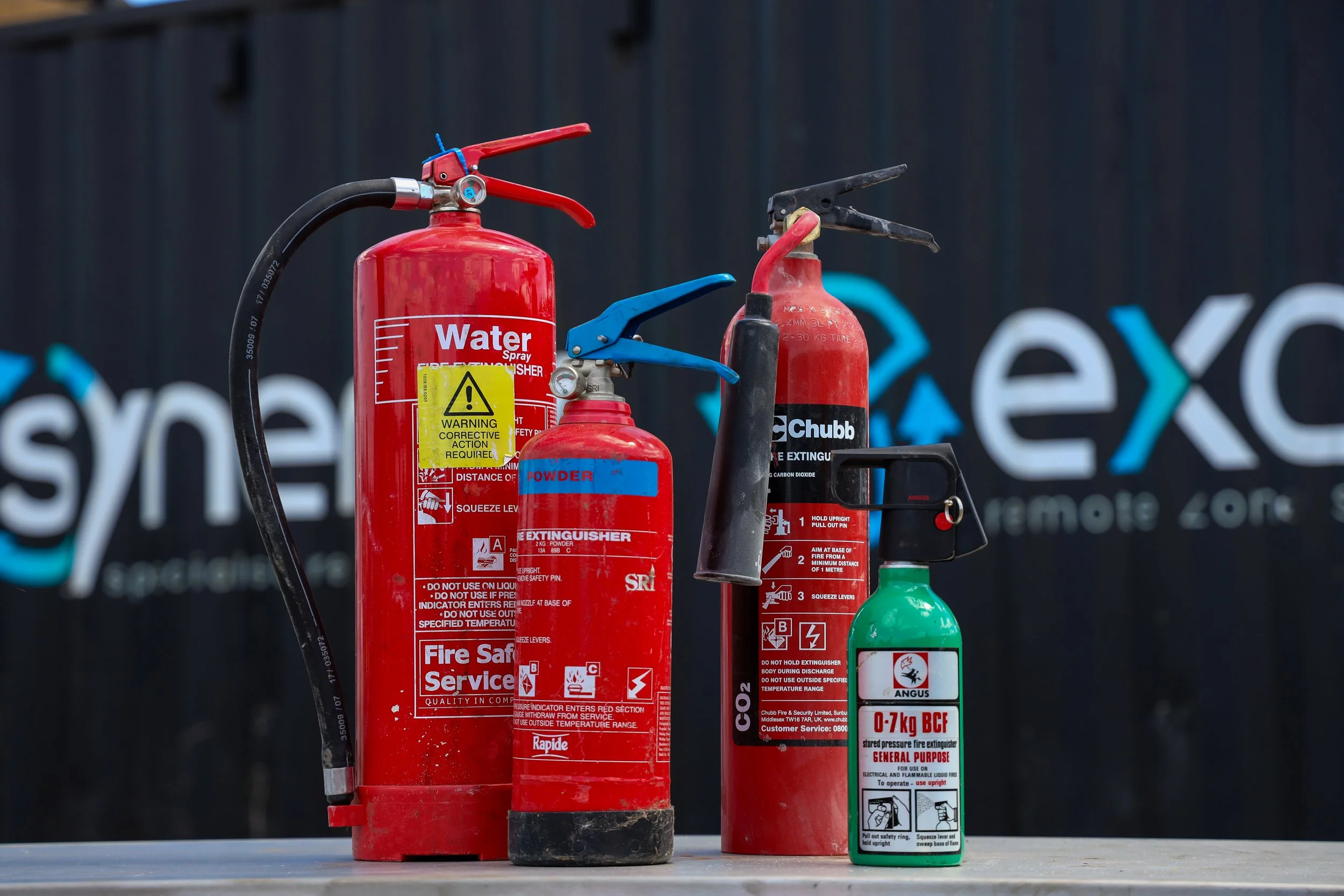How Dangerous is Fire Extinguisher Powder?
Fire extinguishers are essential safety devices in both homes and workplaces, yet many people seldom consider the potential dangers associated with the powder inside them. While fire extinguisher powder is often labelled as non-toxic, it's important to understand that "non-toxic" doesn't equate to "completely safe." Like any other safety equipment, it’s crucial to be aware of how to handle and clean up after using a fire extinguisher to ensure your safety and that of those around you.
Synergy disposal of all fire extinguishers
Dangers of Fire Extinguisher Powder
After a fire, the residue left by a fire extinguisher needs to be carefully cleaned up. Many local regulations prohibit the introduction of phosphates or sulphates into the water table, making the disposal of fire extinguisher residue a task that requires attention. The majority of fire extinguishers contain ammonium phosphate and/or ammonium sulphate, chemicals that, while effective in fire suppression, can irritate the skin. It’s advisable to wear gloves when cleaning up the residue and to use a dust mask to avoid inhalation. The powder can typically be swept or vacuumed up with ease, but don’t forget the importance of checking your extinguisher afterwards—whether that means an inspection, a recharge, or purchasing a new one.
Fire Extinguisher Powder Consumption
Although fire extinguisher powder is non-toxic, it’s certainly not something you’d want to consume. Accidentally ingesting some of the powder could lead to a sore, red throat, and possibly even some stomach discomfort, although this would generally require consuming a significant amount. If any food or dishes have been exposed to the powder, it’s best to rinse them thoroughly. However, if a small amount ends up on your plate, there’s no need to panic. In such small quantities, the powder is not harmful, and it’s safe to clean up.
Fire Extinguisher Powder Inhalation
One of the more significant risks associated with fire extinguishers is the inhalation of the powder. The fine particles can be very irritating to the mucous membranes and, if inhaled in large quantities, may cause breathing difficulties. In a typical small fire scenario, where you would be using a standard household extinguisher, the amount of powder dispersed into the air is unlikely to cause serious issues. However, if you do find yourself inhaling a significant amount, it’s wise to seek medical attention. The powder can coat the inside of your lungs, potentially hindering oxygen from reaching your bloodstream.
Final Thoughts
Not all fire extinguisher powders are created equal, but they must be non-toxic to ensure they are safe for use in homes and vehicles. That said, they can still cause irritation to the skin and eyes, and inhalation or ingestion should be avoided. If you ever find yourself unsure about the potential dangers after exposure to fire extinguisher powder, don’t hesitate to contact your local poison control centre or emergency room for advice.
Understanding the risks associated with fire extinguisher powder allows you to use this crucial safety device more effectively and ensures that you can handle the aftermath safely, protecting yourself and others from potential harm.
Fire extinguisher powders typically contain several chemicals that can be harmful if inhaled, ingested, or come into contact with skin or eyes. Some of the commonly used chemicals in fire extinguisher powders and their associated risks include:
· Monoammonium Phosphate (CAS No. 7722-76-1) - Concentration: 86-94%
Health Classification: R36, R37, R38 (Irritating to eyes, respiratory system, and skin)
· Ammonium Sulphate (CAS No. 7783-20-2) - Concentration: 2-10%
Health Classification: R36, R37, R38 (Irritating to eyes, respiratory system, and skin)
· Mica (CAS No. 12001-26-2) - Concentration: 1.5-2.5%
Health Classification: R36, R37, R38 (Irritating to eyes, respiratory system, and skin)
· Attapulgus Clay (Atapulgite) (CAS No. 8031-18-3) - Concentration: 2-3%
Health Classification: R36, R37, R38 (Irritating to eyes, respiratory system, and skin)
· Amorphous Silica (Synthetic Silica) (CAS No. 7631-86-9) - Concentration: 0.4-1.0%
Health Classification: R36, R37, R38 (Irritating to eyes, respiratory system, and skin)
· Methyl Hydrogen Polysiloxane (Silicon Oil) (CAS No. 68037-59-2) - Concentration: 0.2-0.6%


